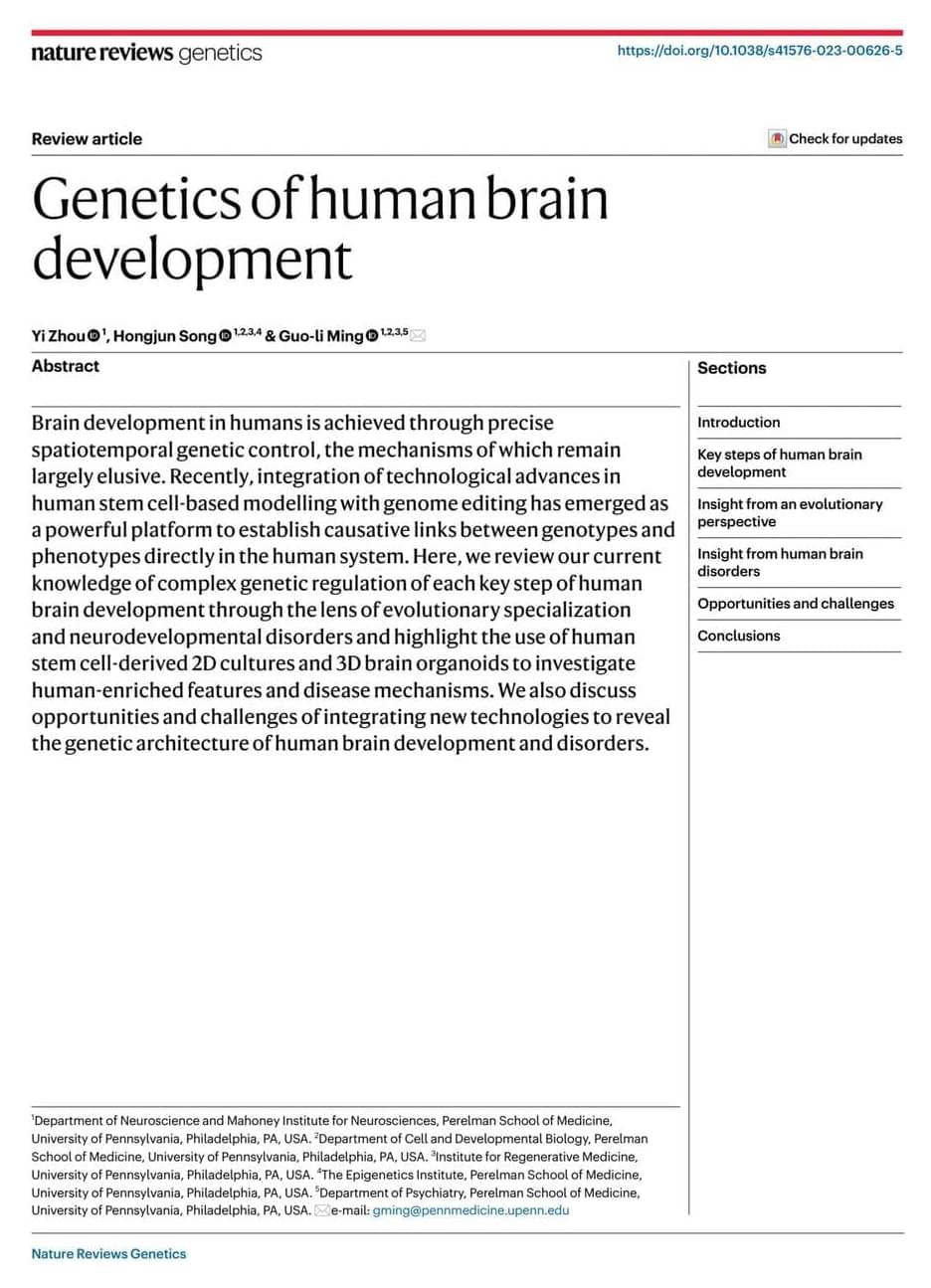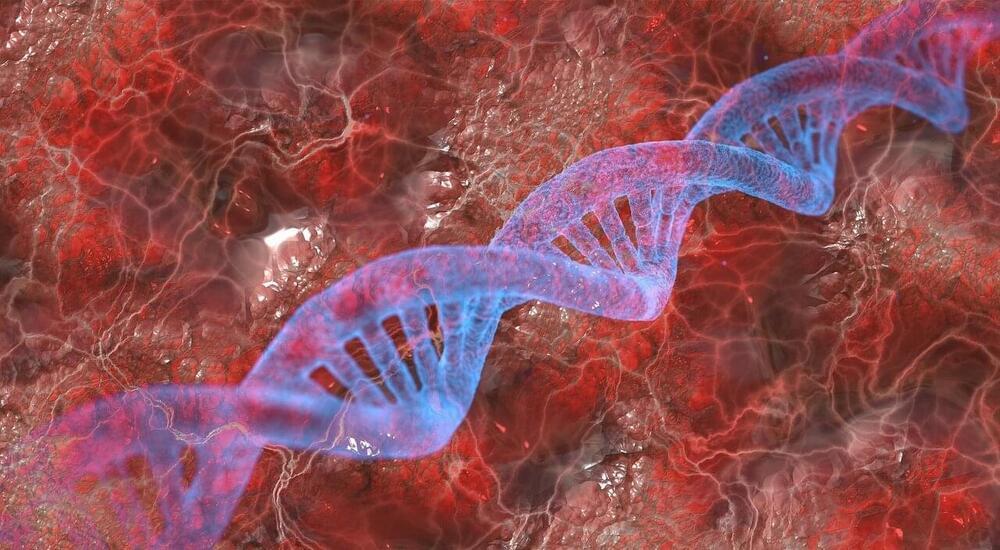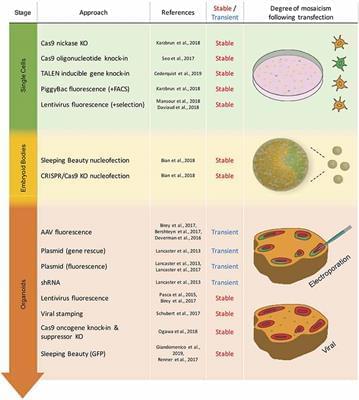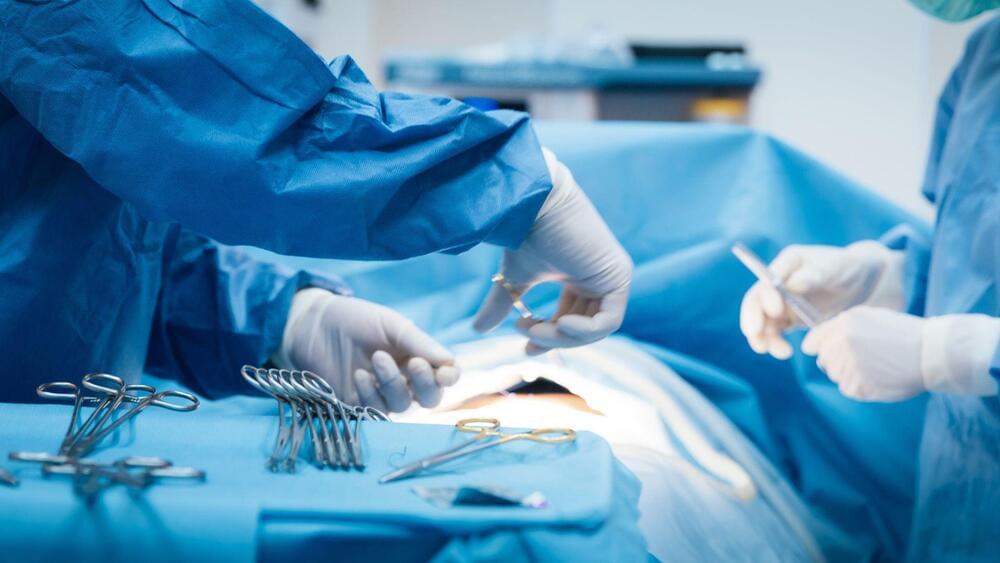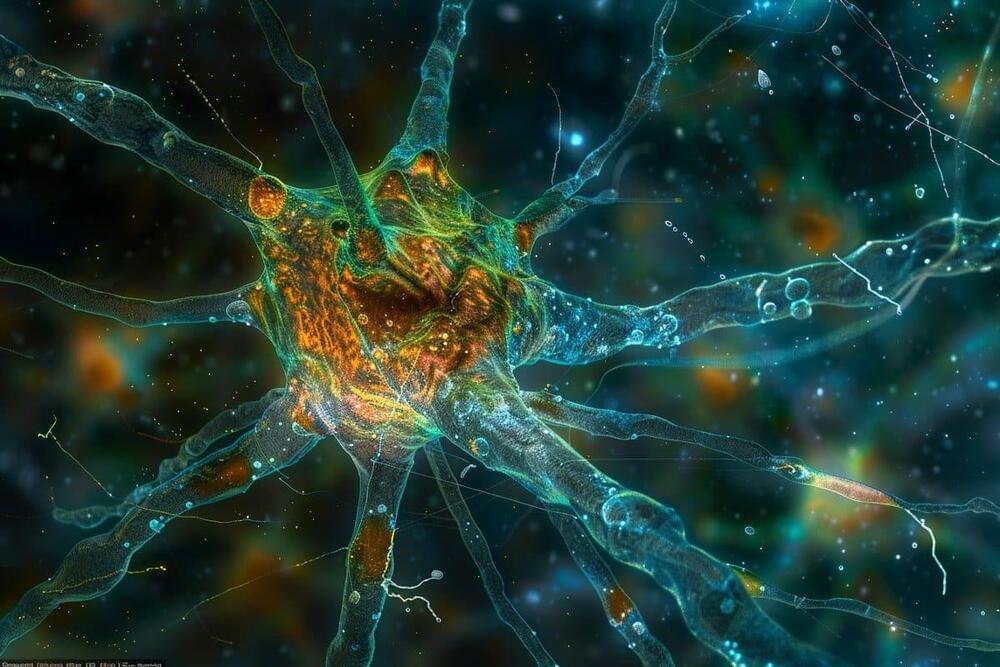Archive for the ‘genetics’ category: Page 32
Mar 24, 2024
Study supports hypothesis that mitochondrial dysregulation is a contributor to the development of schizophrenia
Posted by Dan Breeden in categories: bioengineering, biotech/medical, genetics, neuroscience
Researchers at Rutgers and Emory University are gaining insights into how schizophrenia develops by studying the strongest-known genetic risk factor.
When a small portion of chromosome 3 is missing—known as 3q29 deletion syndrome—it increases the risk for schizophrenia by about 40-fold.
Researchers have now analyzed overlapping patterns of altered gene activity in two models of 3q29 deletion syndrome, including mice where the deletion has been engineered in using CRIPSR, and human brain organoids, or three-dimensional tissue cultures used to study disease. These two systems both exhibit impaired mitochondrial function. This dysfunction can cause energy shortfalls in the brain and result in psychiatric symptoms and disorders.
Mar 22, 2024
Is Aging a Disease? Epigenetics with David Sinclair & Neil deGrasse Tyson
Posted by Montie Adkins in categories: biotech/medical, genetics, life extension
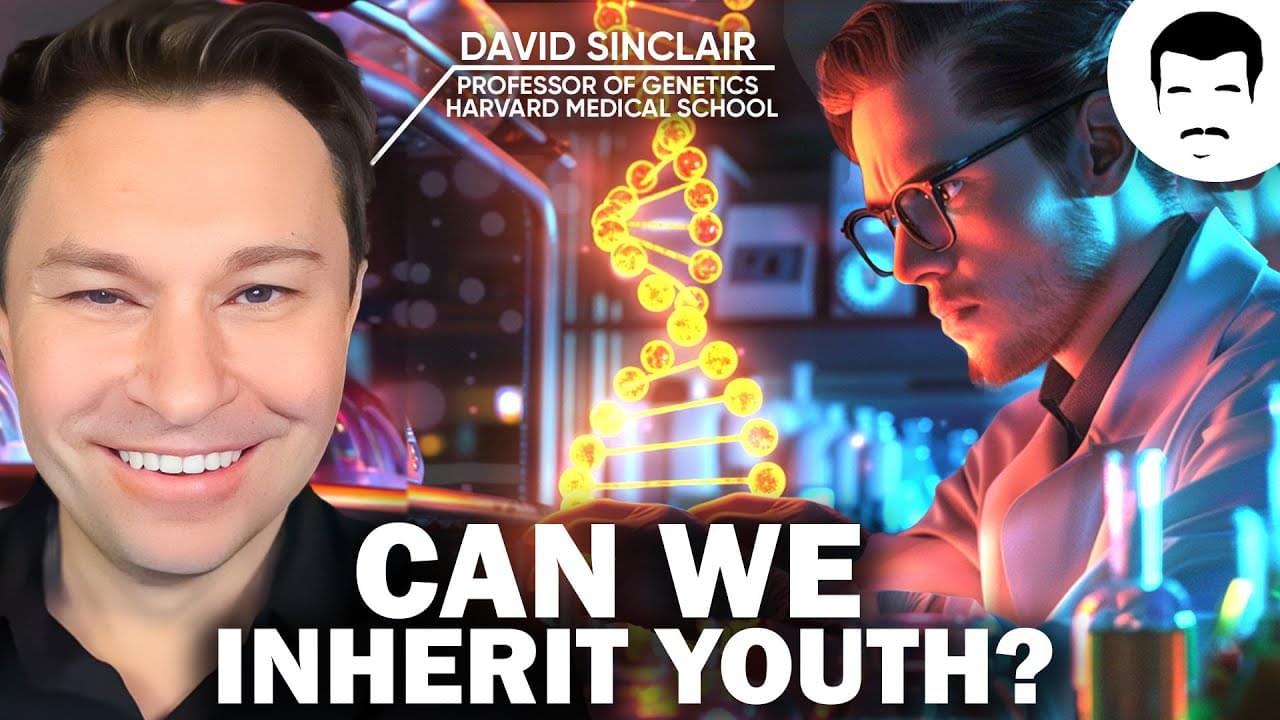
A time question and answer starting at 32:22 (5−6 years)
Is aging a disease that can be cured? Neil deGrasse Tyson and cohosts Chuck Nice and Gary O’Reilly discover the field of epigenetics, the Information Theory of Aging, and curing blindness for mice with Professor of Genetics at Harvard Medical School, David Sinclair.
Continue reading “Is Aging a Disease? Epigenetics with David Sinclair & Neil deGrasse Tyson” »
Mar 22, 2024
Advantages of CRISPR-Cas9 combined organoid model in the study of congenital nervous system malformations
Posted by Dan Breeden in categories: biotech/medical, genetics, neuroscience
In the past 10 years, gene-editing and organoid culture have completely changed the process of biology. Congenital nervous system malformations are difficult to study due to their polygenic pathogenicity, the complexity of cellular and neural regions of the brain, and the dysregulation of specific neurodevelopmental processes in humans. Therefore, the combined application of CRISPR-Cas9 in organoid models may provide a technical platform for studying organ development and congenital diseases. Here, we first summarize the occurrence of congenital neurological malformations and discuss the different modeling methods of congenital nervous system malformations. After that, it focuses on using organoid to model congenital nervous system malformations. Then we summarized the application of CRISPR-Cas9 in the organoid platform to study the pathogenesis and treatment strategies of congenital nervous system malformations and finally looked forward to the future.
Keywords: organoid, CRISPR-Cas9, congenital nervous system malformation, central nervous system, 3D
Mar 22, 2024
Genetic Modification of Brain Organoids
Posted by Dan Breeden in categories: biotech/medical, evolution, genetics, neuroscience
Brain organoids have become increasingly used systems allowing 3D-modeling of human brain development, evolution, and disease. To be able to make full use of these modeling systems, researchers have developed a growing toolkit of genetic modification techniques. These techniques can be applied to mature brain organoids or to the preceding embryoid bodies (EBs) and founding cells. This review will describe techniques used for transient and stable genetic modification of brain organoids and discuss their current use and respective advantages and disadvantages. Transient approaches include adeno-associated virus (AAV) and electroporation-based techniques, whereas stable genetic modification approaches make use of lentivirus (including viral stamping), transposon and CRISPR/Cas9 systems. Finally, an outlook as to likely future developments and applications regarding genetic modifications of brain organoids will be presented.
The development of brain organoids (Kadoshima et al., 2013; Lancaster et al., 2013) has opened up new ways to study brain development and evolution as well as neurodevelopmental disorders. Brain organoids are multicellular 3D structures that mimic certain aspects of the cytoarchitecture and cell-type composition of certain brain regions over a particular developmental time window (Heide et al., 2018). These structures are generated by differentiation of induced pluripotent stem cells (iPSCs) or embryonic stem cells (ESCs) into embryoid bodies followed by, or combined, with neural induction (Kadoshima et al., 2013; Lancaster et al., 2013). In principle, two different classes of brain organoid protocols can be distinguished, namely: (i) the self-patterning protocols which produce whole-brain organoids; and (ii) the pre-patterning protocols which produce brain region-specific organoids (Heide et al., 2018).
Mar 21, 2024
The new science of optimism and longevity
Posted by Shubham Ghosh Roy in categories: biotech/medical, genetics, life extension, neuroscience, science
Results of DNA studies also seem to confirm the idea that optimism is an effective tool for slowing down cellular aging, of which telomere shortening is a biomarker. (Telomeres are the protective caps at the end of our chromosomes.) This research is still in progress, but the early results are informative. In 2012, Elizabeth Blackburn, who three years earlier shared a Nobel Prize for her work in discovering the enzyme that replenishes the telomere, and Elissa Epel at the University of California at San Francisco, in collaboration with other institutions, identified a correlation between pessimism and accelerated telomere shortening in a group of postmenopausal women. A pessimistic attitude, they found, may indeed be associated with shorter telomeres. Studies are moving toward larger sample sizes, but it already seems apparent that optimism and pessimism play a significant role in our health as well as in the rate of cellular senescence. More recently, in 2021, Harvard University scientists, in collaboration with Boston University and the Ospedale Maggiore in Milan, Italy, observed the telomeres of 490 elderly men in the Normative Health Study on U.S. veterans. Subjects with strongly pessimistic attitudes were associated with shorter telomeres — a further encouraging finding in the study of those mechanisms that make optimism and pessimism biologically relevant.
Optimism is thought to be genetically determined for only 25 percent of the population. For the rest, it’s the result of our social relationships or deliberate efforts to learn more positive thinking. In an interview with Jane Brody for the New York Times, Rozanski explained that “our way of thinking is habitual, unaware, so the first step is to learn to control ourselves when negative thoughts assail us and commit ourselves to change the way we look at things. We must recognize that our way of thinking is not necessarily the only way of looking at a situation. This thought alone can lower the toxic effect of negativity.” For Rozanski, optimism, like a muscle, can be trained to become stronger through positivity and gratitude, in order to replace an irrational negative thought with a positive and more reasonable one.
While the exact mechanisms remain under investigation, a growing body of research suggests that optimism plays a significant role in promoting both physical and mental well-being. Cultivating a positive outlook, then, can be a powerful tool for fostering resilience, managing stress, and potentially even enhancing longevity. By adopting practices that nurture optimism, we can empower ourselves to navigate life’s challenges with greater strength and live healthier, happier lives.
Mar 21, 2024
Patient Walking Around Hospital After Transplant of Gene-Hacked Pig Kidney
Posted by Shubham Ghosh Roy in categories: biotech/medical, genetics
In a world’s first, surgeons at the Massachusetts General Hospital in Boston have transplanted a kidney from a gene-hacked pig into a living 62-year-old man.
Researchers are hoping the procedure could reduce our reliance on both hard-to-come-by human donor kidneys, and the expensive dialysis machines that treat kidney disease and failure.
Fortunately, the surgeons’ efforts appear to have paid off — at least for now. The pig kidney started producing urine not long after the surgery last weekend, the New York Times reports. The patient’s condition also continues to improve, according to the report.
Mar 21, 2024
Chinese patient gets world’s first gene-edited pig liver transplant
Posted by Dan Breeden in categories: biotech/medical, genetics
Scientists transplant a pig’s liver into a brain-dead patient with no organ rejection. This may solve the problem of scarcity of donors.
Mar 21, 2024
Breakthrough: Scientists remove AIDS-causing virus from infected cells
Posted by Shubham Ghosh Roy in categories: biotech/medical, genetics
CRISPR-Cas technology sparks hope for curing HIV in cell culture:
Thanks to Nobel-awarded genetic scissors the scientists cut out HIV from cells and gave hope for the future.
Mar 20, 2024
Astrocytes Remember: A New Layer of Immune Memory Uncovered
Posted by Cecile G. Tamura in categories: biotech/medical, genetics, neuroscience
Researchers have made a pioneering discovery that astrocytes, cells within the central nervous system traditionally not associated with immune functions, are capable of developing what’s being called an “immune memory.” This capability…
Summary: Astrocytes, traditionally non-immune cells within the central nervous system, possess the ability to develop an immune memory, responding more vigorously to subsequent immune challenges. This groundbreaking study reveals that through an epigenetic mechanism involving the enzymes p300 and ATP-citrate lyase (ACLY), astrocytes enhance their pro-inflammatory responses, a trait similar to the immune memory seen in adaptive immunity.
The findings, which have been observed in both mouse models of multiple sclerosis (MS) and human cell samples, suggest that astrocyte immune memory may play a significant role in chronic neurological disorders, offering new insights into disease pathology and potential therapeutic targets to mitigate CNS inflammation.
